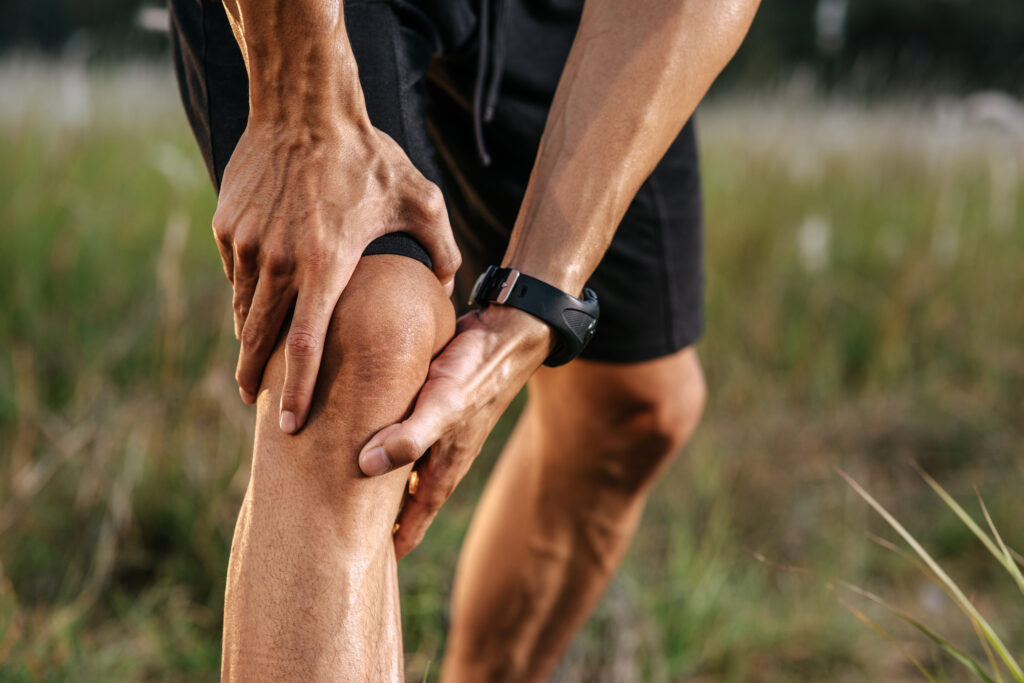If you're struggling with lower back pain in San Antonio, you're not alone, and there are effective treatments available to help you find relief. You might consider options like physical therapy and chiropractic care, which focus on strengthening your muscles and improving alignment. Then there are alternative therapies that can provide targeted relief and holistic support. Each treatment has its unique benefits, but understanding which combination suits your needs can be essential. What's the best approach for you?
Physical Therapy
When it comes to alleviating lower back pain, physical therapy can be a game-changer. This approach focuses on strengthening your muscles, improving flexibility, and enhancing your overall body mechanics. A skilled physical therapist will assess your condition and tailor a treatment plan specifically for you.
Whether it's through targeted exercises, manual therapy, or education about posture and movement, physical therapy aims to relieve pain and prevent future issues.
You'll likely start with an evaluation where your therapist will ask about your symptoms and medical history. From there, they'll guide you through exercises designed to stretch tight muscles and strengthen weak ones. You'll learn how to perform these exercises correctly, ensuring you maximize their benefits while minimizing the risk of injury.
In addition to exercises, your therapist might incorporate modalities like heat, ice, or ultrasound therapy to help ease your pain. These treatments can provide immediate relief and facilitate the healing process.
One of the most notable advantages of physical therapy is its emphasis on self-management. Your therapist will equip you with tools and strategies to manage your pain independently. They'll teach you how to modify daily activities and foster better body mechanics, empowering you to take control of your recovery.
Engaging in physical therapy not only addresses your current discomfort but also sets you up for long-term success by enhancing your strength and flexibility. It's a proactive approach that can greatly improve your quality of life.
Chiropractic Care
Chiropractic care offers another effective avenue for managing lower back pain, complementing the benefits of physical therapy. When you visit a chiropractor, they'll assess your spine and overall posture to identify any misalignments that may contribute to your discomfort. By realigning your spine through manual adjustments, they help restore proper function and reduce pain.
One of the key benefits of chiropractic care is its focus on the underlying issues rather than just masking symptoms. These adjustments can improve mobility, enhance blood flow, and promote the body's natural healing processes. You might find that regular chiropractic sessions help you regain flexibility and strength in your lower back, making it easier to perform daily activities.
In addition to spinal adjustments, chiropractors often incorporate other therapeutic techniques such as soft tissue therapy, stretching, and strengthening exercises. This holistic approach can address muscle tension and improve overall alignment, which further alleviates pain.
Chiropractic care typically involves ongoing treatment, allowing your chiropractor to monitor your progress and make necessary adjustments to your care plan. Many patients report not only reduced pain but also an overall improvement in their quality of life.
If you're considering chiropractic care for lower back pain, guarantee you choose a licensed professional with experience treating similar issues. As you start on this journey, remember that consistency is key to achieving long-lasting relief and restoring your mobility.
Acupuncture
Acupuncture, with its roots in traditional Chinese medicine, offers a unique approach to alleviating lower back pain. This technique involves inserting thin needles into specific points on your body to stimulate energy flow, or "qi." You might be surprised at how effective this can be for relieving pain and promoting overall wellness.
During an acupuncture session, you'll lie down comfortably while a trained practitioner gently inserts needles into targeted areas. Many people report feeling a mild tingling or warmth at the needle sites, but the process is generally painless. As the needles stimulate your body's natural healing response, you may notice a reduction in muscle tension and improved blood circulation, which can greatly ease your discomfort.
Research supports acupuncture's effectiveness for lower back pain. Studies show that regular sessions can lead to long-term relief and improved mobility. It's especially beneficial if you've tried other treatments without success.
Plus, acupuncture has a low risk of side effects compared to medications, making it a safe option for many.
If you're considering acupuncture, it's crucial to consult a licensed practitioner who can tailor the treatment to your specific needs. You may find yourself visiting your acupuncturist several times to achieve the best results.
In San Antonio, many clinics offer acupuncture as part of their pain management programs, so you've got options to explore. With patience and commitment, acupuncture could be the key to revealing lasting relief from your lower back pain.
Massage Therapy
If you're seeking relief from lower back pain, massage therapy might be another effective option to contemplate. This hands-on approach helps alleviate discomfort by targeting the muscles and connective tissues in your back. By manipulating these areas, massage can improve blood flow, reduce muscle tension, and enhance flexibility, all of which contribute to pain relief.
Various types of massage can address lower back pain, including Swedish, deep tissue, and trigger point therapy. Each type serves a different purpose; for example, Swedish massage offers relaxation and promotes circulation, while deep tissue massage focuses on deeper layers of muscle to relieve chronic tension. You can discuss your specific pain with a licensed massage therapist, who can tailor the session to meet your needs.
In addition to immediate relief, regular massage can help manage long-term back issues. Many clients report reduced pain levels and improved mobility after consistent sessions.
Plus, massage therapy can bolster your overall well-being by lowering stress and enhancing relaxation. This holistic approach not only treats the physical aspect of pain but also fosters a sense of mental calm.
Before starting any massage therapy, it's wise to consult with your healthcare provider to ascertain it's a suitable option for your specific condition.
Combining massage with other treatments, such as physical therapy or exercise, can yield even better results. So, if you're looking for an alternative method to address your lower back pain, consider giving massage therapy a try. You might find it's exactly what you need.
Epidural Steroid Injections
Epidural steroid injections are a common treatment option for those struggling with lower back pain, especially when conservative methods haven't provided sufficient relief. These injections deliver steroids directly into the epidural space surrounding your spinal cord and nerves, targeting inflammation and pain. If you're dealing with conditions like a herniated disc or sciatica, this treatment can help reduce swelling and alleviate discomfort.
Before the procedure, your healthcare provider will evaluate your medical history and may perform a physical examination. You'll typically receive a local anesthetic to minimize discomfort during the injection. It's important to discuss any concerns you have with your doctor beforehand, as they can explain what to expect and address potential risks.
The injection itself is a quick procedure and usually takes about 15 to 30 minutes. Afterward, you might feel temporary relief, but it can take a few days for the full effects to kick in. Many patients experience significant pain relief that can last for weeks or even months, allowing them to engage in physical therapy or other rehabilitation exercises.
However, keep in mind that epidural steroid injections aren't a permanent fix. They're often part of a broader treatment plan that may include physical therapy, medication, or lifestyle changes.
Regular follow-ups with your healthcare provider can help monitor your progress and determine if additional injections are necessary to manage your lower back pain effectively.
Pilates and Yoga
Wondering how you can strengthen your lower back while improving flexibility? Pilates and yoga are excellent choices that can help you achieve these goals. Both practices focus on core strength, posture, and body awareness, essential elements for maintaining a healthy back.
In Pilates, you'll engage in controlled movements that target your core muscles, including the abdominals, lower back, hips, and glutes. This method emphasizes alignment and balance, allowing you to build strength without straining your back.
You'll learn to activate your core, which provides stability and support for your spine. Regular practice can lead to improved muscle tone and reduced discomfort in your lower back.
Yoga, on the other hand, combines physical postures, breathing exercises, and meditation to enhance flexibility and relaxation. Many yoga poses, or asanas, specifically target the lower back, helping to stretch and strengthen the surrounding muscles.
Poses like Child's Pose, Cat-Cow, and Downward Dog can relieve tension and promote better spinal alignment. Additionally, yoga encourages mindfulness, which can help you manage pain and stress more effectively.
Incorporating both Pilates and yoga into your routine can create a balanced approach to back care. Aim for at least two sessions per week, and listen to your body as you progress.
With consistent practice, you'll likely notice a significant improvement in your lower back strength and flexibility, making daily activities easier and more enjoyable.
Alternative Therapies
When exploring options for managing lower back pain, alternative therapies can offer effective relief and support. Many people find that incorporating these therapies into their routine can help alleviate discomfort and improve overall well-being.
Acupuncture is one popular alternative therapy. This ancient Chinese practice involves inserting thin needles into specific points on the body to promote healing and reduce pain. Many patients report marked improvements in their back pain after a few sessions.
Chiropractic care is another valuable option. Chiropractors focus on aligning the spine and correcting any misalignments that may contribute to your pain. Regular adjustments can enhance mobility and provide lasting relief.
Massage therapy can also be beneficial. Therapeutic massage targets muscle tension and stress, helping to relax tight areas in your back. You might find that a skilled massage therapist can greatly reduce your discomfort and improve your range of motion.
Herbal remedies and supplements, such as turmeric or ginger, are gaining popularity for their anti-inflammatory properties. Consulting with a healthcare provider can help you determine the best options for your specific needs.
Lastly, mind-body techniques like meditation and guided imagery can help manage pain by reducing stress and promoting relaxation. These practices can empower you to take control of your pain management journey.
Incorporating one or more of these alternative therapies into your routine can lead to a more holistic approach to lower back pain relief. Consider exploring these options to find what works best for you.
Conclusion
In San Antonio, finding relief from lower back pain is possible with a variety of effective treatments. By exploring options like physical therapy, chiropractic care, and acupuncture, you can customize a plan that suits your needs. Don't forget about the benefits of massage therapy, epidural steroid injections, and exercise-based approaches like Pilates and yoga. Embracing alternative therapies can also enhance your recovery. Take charge of your health and start your journey towards a pain-free life today!



